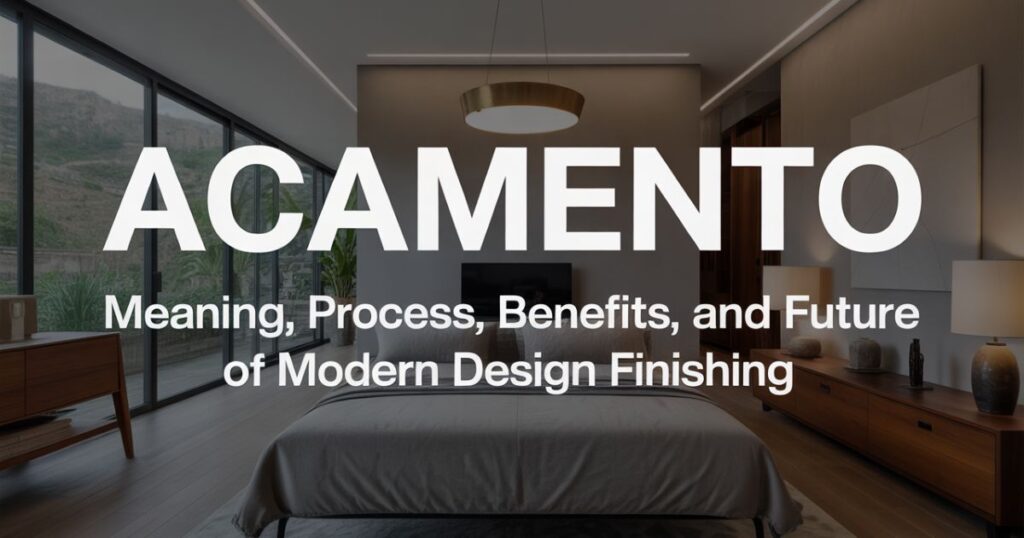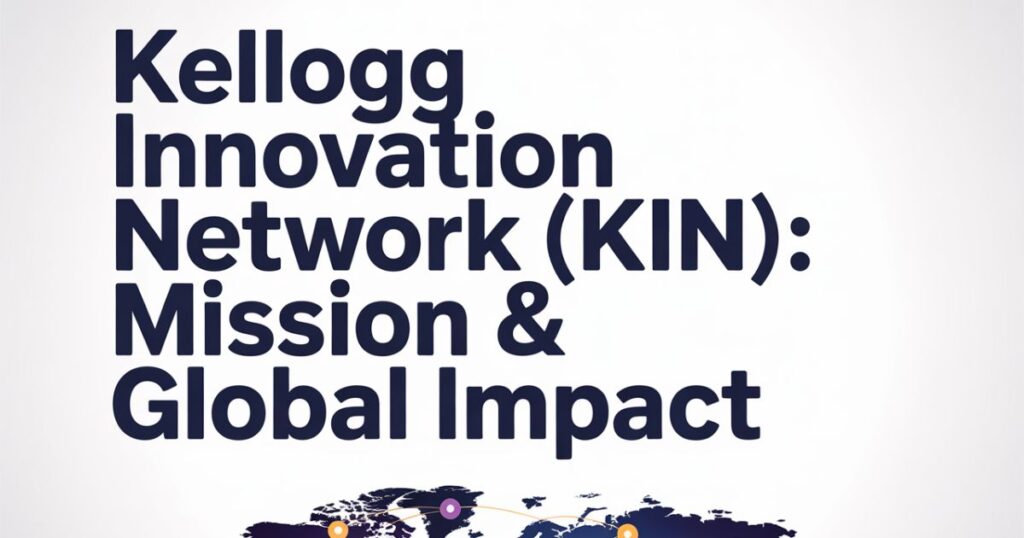Introduction to Acamento and Its Significance
Acamento represents the new age of modern design innovation, blending art, science, and technology into one seamless process. It’s not just about making surfaces look beautiful — it’s about transforming them with precision and purpose.
Through advanced coating systems and digital surface treatment, Acamento enhances durability, texture, and reflectivity, giving materials a refined and luxurious finish. This process is widely used in architecture, industrial design, and high-end furniture manufacturing to achieve exceptional aesthetic and functional design results.
As industries move toward sustainable design practices, It stands at the forefront, redefining how creativity and technology can work together to shape the future of finishing.
What is Acamento? A Modern Design Concept Explained
So, what is Acamento? It refers to a specialized process used to enhance the texture, appearance, and resilience of materials through innovative finishing methods. Unlike traditional coatings, it integrates digital precision finishes and smart material technology to achieve stunning results.
How it works is through advanced layering techniques that modify how light reflects on a surface, improving both durability and beauty. It’s used in furniture, industrial products, and architecture to produce smooth, textured, or reflective effects that align with modern aesthetics and sustainability goals.
Historical Evolution and Cultural Influence of Acamento
The origins of Acamento lie in ancient craftsmanship where artisans refined metals, ceramics, and wood for visual and tactile perfection. Over centuries, this evolved into design finishing techniques powered by machines and now, by AI-driven systems.
Today, Acamento reflects a cultural blend of artistic craftsmanship and technological advancement. As industries shift toward eco-friendly materials and sustainable design practices, It represents harmony between beauty, performance, and environmental awareness.
Understanding the Acamento Process Step-by-Step
The step-by-step it process begins with surface cleaning and priming to ensure flawless adhesion. Then comes texturing and layering using advanced coating systems such as nano-finishes or digital sprays.
The final stages involve texture and reflectivity control to enhance light interaction, followed by sealing to protect from moisture and wear. The entire process ensures product durability and protection, making every surface both functional and visually captivating.
Types of Acamento Finishes and Material Compatibility
There are several types of Acamento finishes, each designed to create a unique impression. Matte finishes offer subtle elegance, glossy ones enhance light, and textured finishes provide depth.
Here’s a quick comparison:
| Finish Type | Ideal Material | Effect |
| Matte | Metal, Ceramics | Smooth and soft |
| Glossy | Plastic, Glass | Reflective and sleek |
| Textured | Wood, Eco-resins | Deep and tactile |
| Brushed | Metal, Plastic | Industrial elegance |
Understanding material compatibility ensures designers achieve perfect balance between function and beauty.
Tools, Equipment, and Techniques for Acamento Perfection
Achieving a flawless finish requires specialized Acamento tools and materials. Professionals rely on precision air sprayers, polishing machines, and digital fabrication tools for even application.
Modern Acamento techniques such as 3D printed coatings and nano-finishing technology bring unmatched control and customization. Temperature, humidity, and pressure are carefully regulated to ensure consistency and long-lasting performance.
Acamento in Architecture and Interior Design
Its in architecture enhances structural aesthetics and material endurance. Architects use it to design facades that interact with natural light while resisting weathering.
In interior design, furniture design textures and wall finishes with Acamento create elegant spaces. The result is an environment that feels luxurious, sustainable, and harmonious with user experience in design.
Acamento in Industrial Design and Manufacturing
Industries rely heavily on Acamento in industrial design for precision and durability. From automotive coatings to tech gadgets, its industrial finishing solutions improve surface resistance and visual quality.
Manufacturers now employ digital surface treatment and automation to ensure every product maintains high performance standards while meeting modern aesthetic expectations.
Aesthetic and Functional Benefits of Acamento
The benefits both visual and practical. It improves texture and reflectivity control, enhancing how surfaces catch light and feel to the touch.
Functionally, it ensures durability and protection in design, resisting scratches, heat, and corrosion. Designers value it for balancing artistic expression with everyday usability.
Acamento vs Traditional Finishing Techniques
Comparing Acamento vs traditional finishing, the difference lies in innovation and precision. Traditional finishes protect, but Acamento transforms surfaces through modern finishing technology and digital precision finishes.
| Aspect | Traditional Finishing | Acamento Finishing |
| Method | Manual | Digital & automated |
| Durability | Moderate | High |
| Aesthetics | Limited | Dynamic |
| Sustainability | Low | High |
This shift marks Acamento as the future of design finishing.
The Science Behind Acamento Finishes
Behind every perfect finish lies material science. Acamento relies on nano-finishing technology that manipulates molecules to create strong, reflective, and resistant surfaces.
By controlling the interaction of light and material, It achieves unmatched visual harmony. This scientific foundation ensures every project meets both aesthetic and functional design standards.
Common Mistakes to Avoid and Professional Tips for Success
Common errors in Acamento include poor surface preparation and incorrect material pairing. Without clean, primed surfaces, even the best modern finishing technology can fail.
Experts recommend testing finishes on small samples before final application. This ensures how to achieve perfect its results without flaws or inconsistencies.
Emerging Trends and Smart Acamento Technologies
Smart Acamento technologies are reshaping the design world. Surfaces now respond to touch, light, and temperature, creating interactive user experiences.
Trends like 3D printed coatings and AI-controlled applications highlight the growing fusion of smart material technology and creativity. These breakthroughs redefine what’s possible in modern design.
Acamento in Sustainable and Eco-Friendly Design
With the rise of sustainable its techniques, designers are embracing eco-friendly surface finishes made from biodegradable and low-VOC materials.
These sustainable design practices help reduce environmental impact while ensuring superior aesthetics. It proves that luxury and sustainability can coexist harmoniously.
Case Studies: Real-World Examples of Acamento in Action
A New York architectural firm used Acamento in architecture to design reflective facades that cut cooling costs by 15%. In California, furniture brands applied eco-friendly materials to craft textured tables resistant to scratches and stains.
In the automotive industry, industrial finishing solutions have extended vehicle paint life by years, blending performance with elegance. These real-world Acamento examples prove its transformative power.
Comparing Industry Applications: Acamento Across Sectors
Acamento adapts to multiple industries seamlessly.
| Industry | Application | Result |
| Architecture | Facade coating | Light control & durability |
| Furniture | Textured wood finish | Elegant & eco-friendly look |
| Automotive | Metallic layers | Scratch resistance |
| Electronics | Digital touch panels | Interactive surfaces |
This versatility showcases its trends and innovations across markets.
The Future of Acamento: Predictions and Global Trends
The future of it is in industries looks promising as innovative finishing methods continue evolving. AI, robotics, and smart Acamento technologies will make processes faster and more adaptive.

Global trends point toward sustainable design practices and digital fabrication, ensuring that Acamento remains at the core of creative innovation.
Conclusion: Why Acamento Defines the Next Era of Design Excellence
Acamento isn’t just another surface finishing process; it’s a revolution in material expression. It bridges beauty, science, and sustainability, making it essential for modern designers.
As industries evolve, Acamento will continue leading modern design innovation, merging art and technology to create lasting, meaningful design experiences that shape the future.

